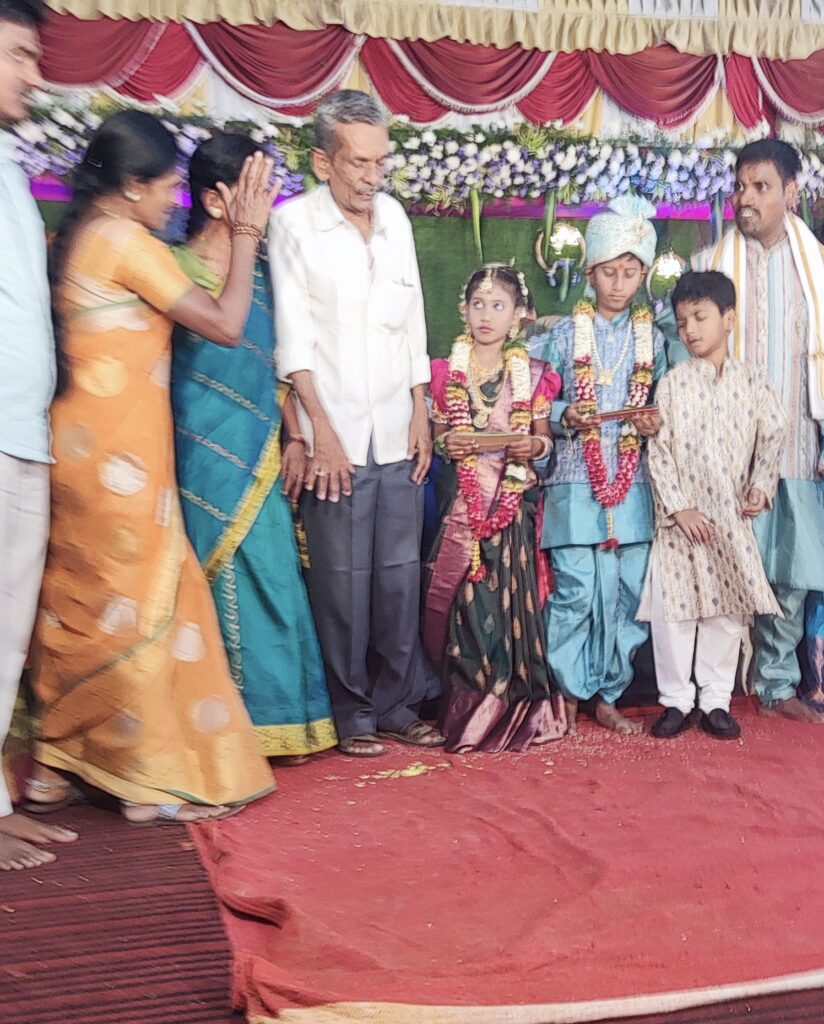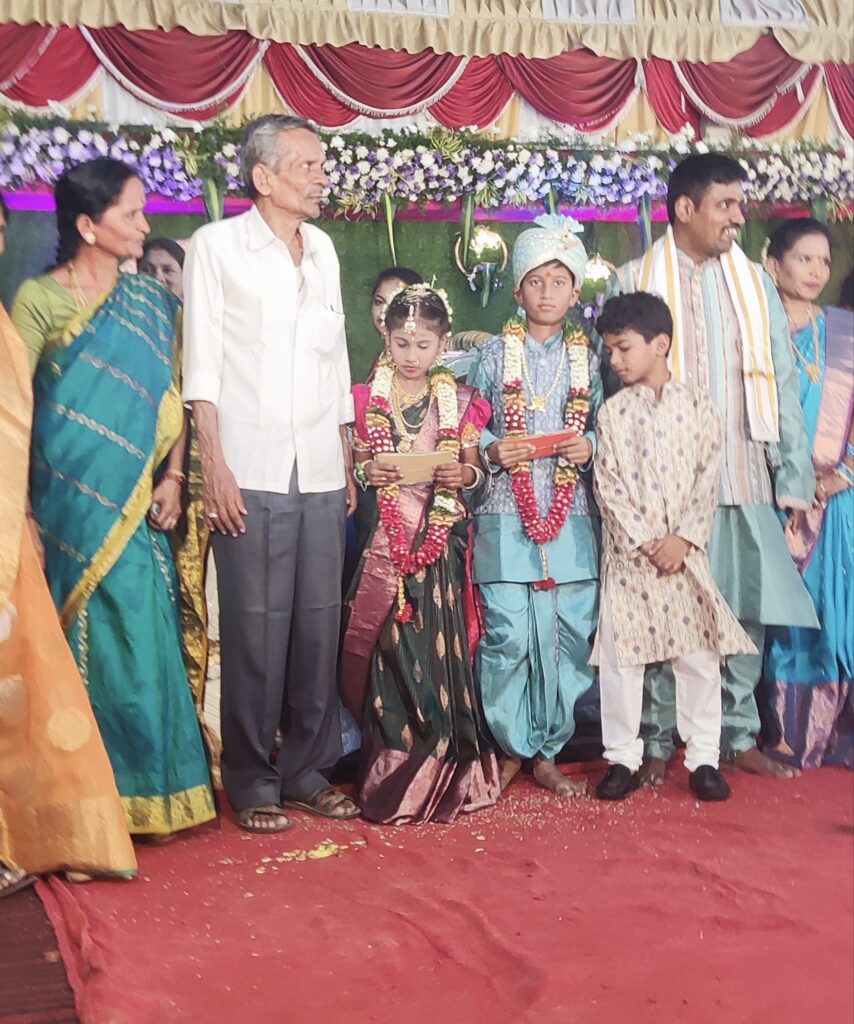My experience at the ‘Dhoti (boy) and Half-saree (girl) Ceremonies’ in Hyderabad
(Prof Shankar Chatterjee, Hyderabad)
India, with its rich culture and different types of linguistics, religion, and groups, India is popular worldwide because of pluralism. It is pertinent to mention that India has one of humanity’s largest collections of songs, music, dance, theatre, folk traditions, performing arts, rites and rituals, paintings, and writings known as the ‘Intangible Cultural Heritage’ (ICH) of humanity. According to UNESCO, ‘cultural heritage’ includes traditions or living expressions inherited from our ancestors and passed on to our descendants, such as oral traditions, performing arts, social practices, rituals, festive events, knowledge and practices concerning nature and the universe or the knowledge and skills to produce traditional crafts.
I have been to many foreign countries, and many foreigners have told me about India. Different religious celebrations, functions, rituals, etc., occur in our country, depending on the geographical region. I observed one celebration in Hyderabad, not Assam, West Bengal, or Tripura (I stayed in these states for many years), called the ‘dhoti and half-saree ceremony.’ I have been in Hyderabad with my family for the last three decades but have attended such functions occasionally. On April 22, 2024, I attended the ‘dhoti and half-saree ceremonies’ of Aadishwar (boy/11 years) and Srivalli (girl/9 years)—brother and sister. Their father, Pulichinthala Naresh, although younger than me, is my good friend and well-wisher. Their mother, Jagadevi, is a homemaker and supports the poor people. Their many relatives attended the ceremony, and in the initial phase, both the children were blessed by their paternal grandparents, Pulichinthala Srisailam (grandfather) and Sugnanamma (grandmother).

Regarding the Half-saree ceremony, I am presenting a few lines from the website lovenspire.com/blogs/ “Half-saree ceremonies have been celebrated in India for generations and have evolved over time. The ceremony is more prevalent in South Indian states like Andhra Pradesh, Telangana, Tamil Nadu, and Kerala. The practice of wearing a half saree is mentioned in ancient Indian scriptures, and the tradition has been passed on through generations. The half saree can be a simple or decorative garment, depending on the family’s social and financial status. The saree is usually made of silk, cotton, or chiffon, and is adorned with intricate designs and embellishments”. About the ‘rituals and customs’ of this ceremony by referring the same website, “The half-saree ceremony includes several age-old rituals. These rituals are performed with much devotion and add to the ceremonial grandeur. The ceremony includes blessings by elders, significant women in the family, and close friends. Relatives and family members are invited to celebrate the occasion and bless the young girl. The primary customs include tying the waistband or dora to keep the saree securely on, adorning the girl with jewellery, and performing traditional prayers. The young girl is also pampered and showered with love, gifts, and blessings from all those present”.
On the other hand, about the ‘Dhoti ceremony,’ it is pertinent to mention that “the dhoti ceremony, also known as Dhoti Krsna Sambandha, is a significant tradition in several Indian cultures, symbolizing a boy’s transition into the early steps of manhood. This event marks when a boy’s attire transforms from that of a child to an adult, donning the traditional dhoti, a symbol of respect and maturity.

In the past, the dhoti was a cultural garment and a sign of a person’s role and station in life. Wearing a dhoti was indicative of entering a new stage of life, aligning with the significance placed on clothing as a marker of transition and growth. The ceremony today carries these rich historical meanings, emphasizing the importance of cultural continuity and milestones in a young boy’s life” (source: lovenspire.com/blog).
I thoroughly enjoyed both ceremonies on April 22, 2024, as I rarely attend such ceremonies. Hospitality was excellent, and I was overwhelmed by the scrumptious foods (all vegetarian). I wish both brother and sister a blissful, peaceful, and prosperous life. They should be great citizens of the country. (Author is a former Professor and Head (CPME), NIRD & PR, Hyderabad)
